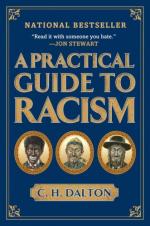|
This section contains 1,897 words (approx. 7 pages at 300 words per page) |

|
Nineteen sixty-three was a pivotal year in the history of race relations in the United States. In April of that year, Martin Luther King Jr. and several other civil rights leaders initiated a nonviolent protest campaign to desegregate public facilities in Birmingham, Alabama. City authorities turned fire hoses and police dogs on a large crowd of demonstrators—many of whom were children from local schools—and hundreds of protesters were beaten and arrested. The violent commotion was broadcast in national and world news media, allowing millions to witness the startling brutality of American racism for the first time. Two months later, President John F. Kennedy appeared on national television to proclaim his support for pending legislation that would forbid racial discrimination in employment, housing, and public accommodations. To help champion this legislation, civil rights advocates organized demonstrations in nearly every major city in the United States...
|
This section contains 1,897 words (approx. 7 pages at 300 words per page) |

|



